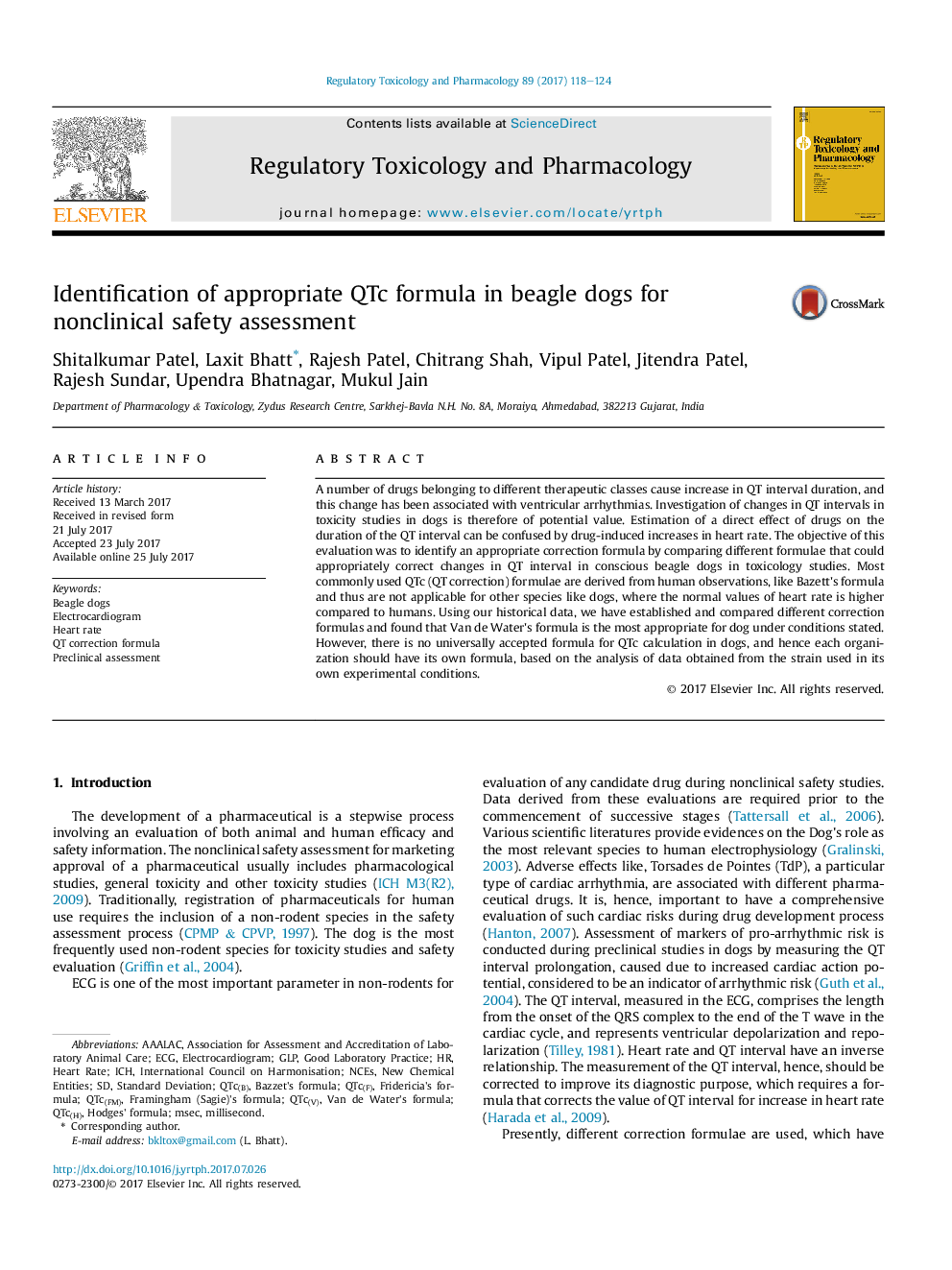| Article ID | Journal | Published Year | Pages | File Type |
|---|---|---|---|---|
| 5561192 | Regulatory Toxicology and Pharmacology | 2017 | 7 Pages |
â¢A retrospective analysis of historical control data of ECG values is done.â¢5 different QTc formulae were analyzed through the data.â¢Van de Water' formula corrects QTc for increase in heart rate in most data.â¢Bazett's formula is efficient for heart rate more than 120.â¢Results may wary slightly for different test sites.
A number of drugs belonging to different therapeutic classes cause increase in QT interval duration, and this change has been associated with ventricular arrhythmias. Investigation of changes in QT intervals in toxicity studies in dogs is therefore of potential value. Estimation of a direct effect of drugs on the duration of the QT interval can be confused by drug-induced increases in heart rate. The objective of this evaluation was to identify an appropriate correction formula by comparing different formulae that could appropriately correct changes in QT interval in conscious beagle dogs in toxicology studies. Most commonly used QTc (QT correction) formulae are derived from human observations, like Bazett's formula and thus are not applicable for other species like dogs, where the normal values of heart rate is higher compared to humans. Using our historical data, we have established and compared different correction formulas and found that Van de Water's formula is the most appropriate for dog under conditions stated. However, there is no universally accepted formula for QTc calculation in dogs, and hence each organization should have its own formula, based on the analysis of data obtained from the strain used in its own experimental conditions.
